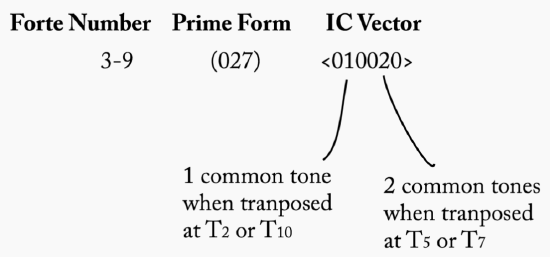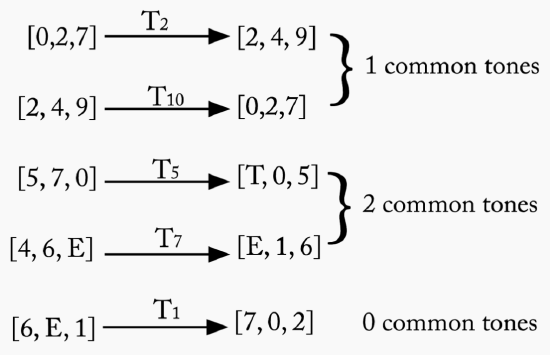6.12: Set Theory - Common Tones under Transposition
- Page ID
- 62242
We’ve already seen that the set class list can tell us some very interesting and important things about the intervallic properties of a set class and its complement.
It can also tell us how many common tones are retained when a set is transposed. Here’s how it works:
Each placeholder in the interval vector tells us how many of a particular interval class are in a given set class. For example, in the (027) set class shown below, all members of that class will have two interval class 5s and one interval class 2.
Those numbers also tell us how many common tones are retained when those sets are transposed by a member of that interval class. That is, because there is a 1 in the second column, a pitch class set belonging to (027) will retain 1 common tone when transposed by either T2 or T10. Because there is a 2 in the fifth column, it will retain 2 common tones when transposed by either T5 or T7.

You can see this explicitly below. I’ve taken four arbitrary members of (027)—show on the left—and transposed them in various ways. As indicated above, only T2, T10, T5, or T7 will keep common tones. Any other transposition will have zero common tones.

If an interval class vector has a tritone, it will retain twice as many common tones under tritone transposition than is indicated in the vector. For example, the trichord (016) has an interval vector of <100011>. When transposed by T6, it will have 2—not 1—common tones.


